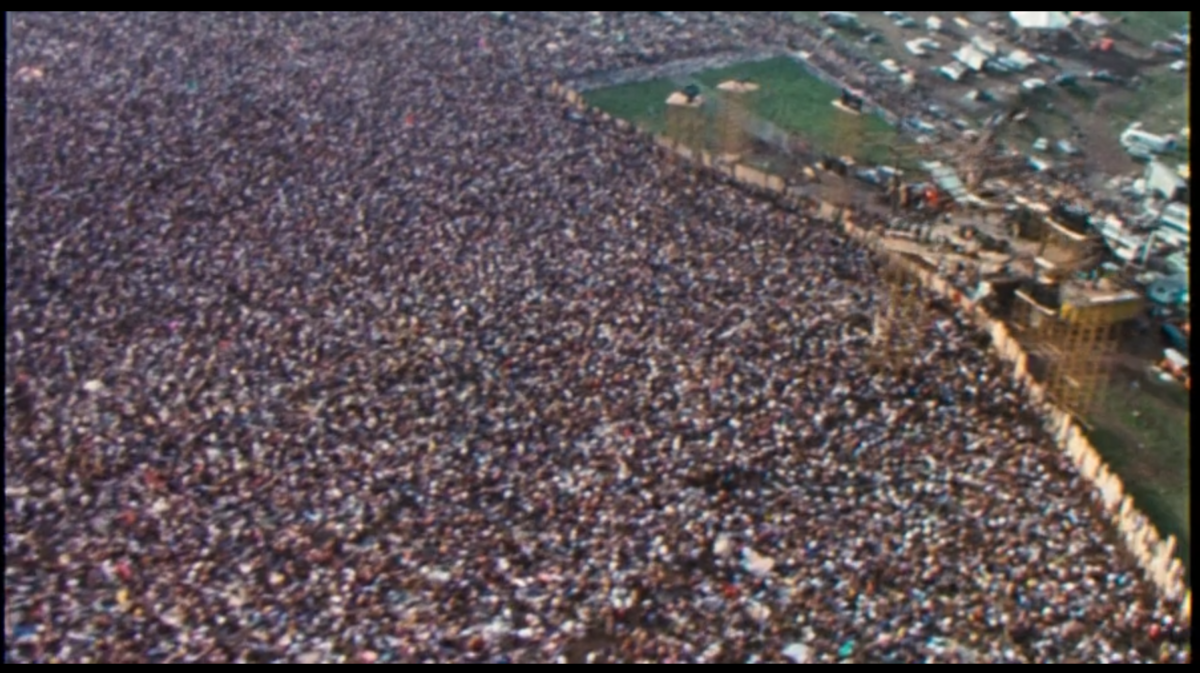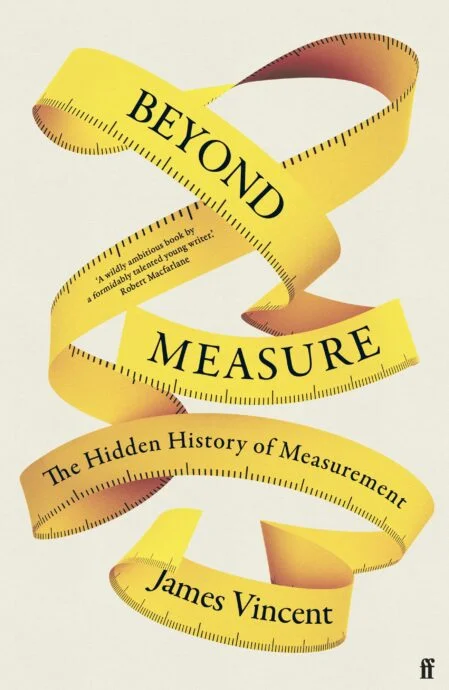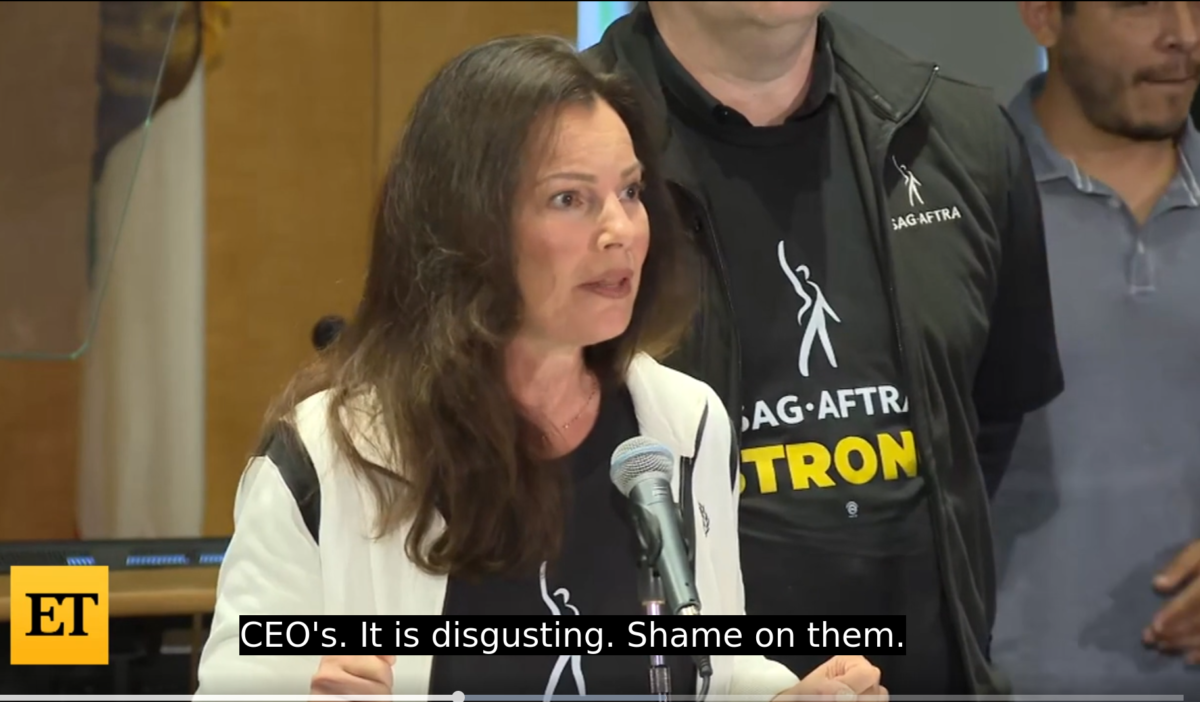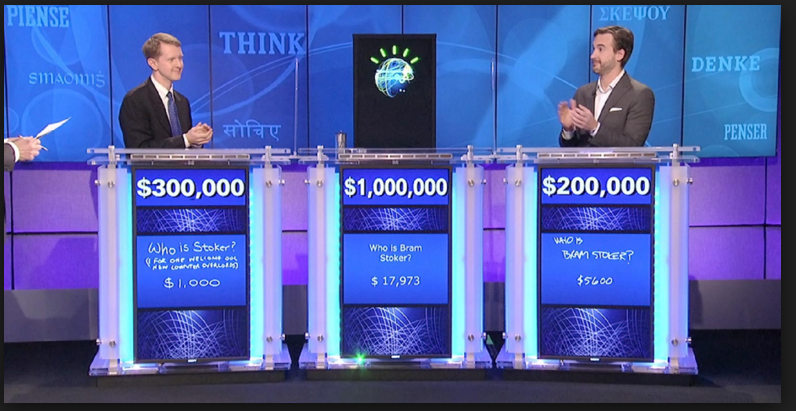“Do you know anything about the festival, the culture, and movements of the times?” a teenaged friend asked as part of researching Woodstock for an essay.
The reality is that until a few years ago Woodstock only existed in my head because of the movie.
At the time, I was 15. I knew it was happening; I recall hearing on my parents’ car radio that the festival, 100 miles north, was being declared a disaster area.
“Can we go?” I remember inexplicably asking. My parents were immediately dismissive. Smart: we’d just have spent hours pointlessly stuck in traffic.
And that was it, until 1971 or thereabouts, when I saw the movie as a college student. And *that* was it until 2009, when the late, great film critic Roger Ebert picked it for Ebertfest to celebrate the 40th anniversary rerelease, with director Michael Wadleigh present to explain the manual labor required to carve the movie out of 120 miles of footage and invent its split screens and other effects, using razor blades and tape. Today, it would all be done on computers in a fraction of the time.
My Ebertfest account reminds me that faced with the studio’s intention to cut out half his movie despite his contractual “final cut”, Wadleigh stole the film (see also Blake Edwards’ S.O.B. (1981)). He then got his agent to convince the studio that he would set fire to it and himself if they didn’t release it at the full length he intended. Thus was born America’s most successful documentary.
As you might expect, the artist I most remember is Joan Baez, who, surveying the 400,000-person throng while being told she’d close the night’s show, says, “Maybe there’ll be a few more people here by then. I don’t like a puny, little gathering like this.” Later, she brings the house down with just her voice on “Swing Low, Sweet Chariot” (timecode 0:48).
Soon after that Ebertfest I discovered I knew people who’d gone. The 40th anniversary landed it on the front page of the New York Times. When a friend’s high school-aged kids noticed it, he casually dropped the bomb: “I was there.” Yes, kids, your father was cool, once.
“Was it anything like the movie?” I asked.
“It was more boring. The movie was highlights. You have to remember, it rained for three days and there was nothing to eat.”
In 2018, another friend and I went to see an exhibit of art from Burning Man in Washington, DC.
The art was awesome, but my friend began fretting about the impact on the desert lands where it’s held (also, Fern’s departure point in the movie Nomadland). I explained that the crew spend a post-event month meticulously restoring the desert to pristine condition.
She seemed relieved. “I was at Woodstock.” Decades on, she remained conscious and ashamed of the damage to the surrounding area and the harm done to the local farmers. Most people, she thought, had forgotten that.
It is, however, documented in the movie. Wadleigh and his 16-camera team (which included a young Martin Scorsese) gave over 40% of the finished movie to interviews with organizers, audience members, and local residents. Over the days, the locals’ attitudes noticeably shift from welcoming to frustrated as the festival bursts its banks and gives up trying to charge admission, and supplies run out.
My friend was right, though; most people remember just the music and the myth. Few notable musicians missed it: Bob Dylan, despite living nearby at the time; Joni Mitchell, who later wrote a song about it; The Beatles; The Rolling Stones. Not in the movie were musicians booked to appear on substages, as I learned when one of my favorite folksingers, the late Ed Trickett, explained in interviews in 2016 and 2017 that he was meant to accompany Rosalie Sorrels on a rained-out sub-stage intended to feature folk music. His experience was certainly different from those starving in the mud: helicoptered in from the performer hotel.
But, as Arlo Guthrie said at the time, that’s not what I came here to talk about.
It is even clearer in retrospect how much Woodstock was shaped by protest against the Vietnam war. The organizers’ repeated pride that 400,000 mostly young people could assemble for three days of “peace and music” is a direct oppositional response to the violence elsewhere. The hair lengths some local residents comment on were as much about visually rejecting the military as rebelling against the clean-cut, nicely-clothed corporate workers their middle class parents intended them to be. This is the serious underpinning that made Woodstock more than a music festival, and gave extra juice to that giant audience shouting “FUCK!” as Country Joe McDonald introduced the explicitly anti-war Fixin’-to-Die Rag. Ebertfest’s 2009 theaterful joined in lustily.
By 1995, when Ebert rereviewed the movie for its 25th anniversary (he revisited it yet again on its 35th anniversary in 2005) the movie’s creation of the festival’s mythic status had become clear. Without the movie, as Ebert said, the festival itself would be a mostly-forgotten “rock concert that produced some recordings”. No publicly celebrated 40th anniversary, and if my friend’s kids ever did hear their father had been there, they would have said, “So lame”.
The only way I can imagine a modern event of similar impact would be if it took place in Russia and the audience was filled with people opposing the war in Ukraine. They would need a characteristic I’m not sure exists in the world any more: a real belief that ending all war was possible.
Illustrations: Aerial shot of the festival from Woodstock.
Wendy M. Grossman is the 2013 winner of the Enigma Award. Her Web site has an extensive archive of her books, articles, and music, and an archive of earlier columns in this series. Follow on Mastodon.




